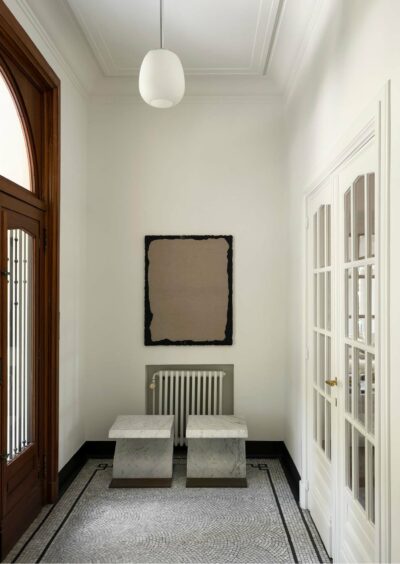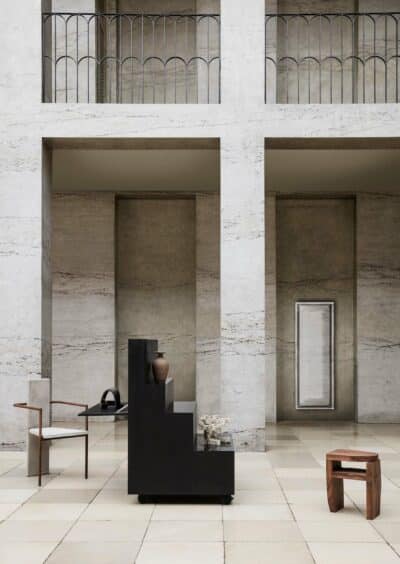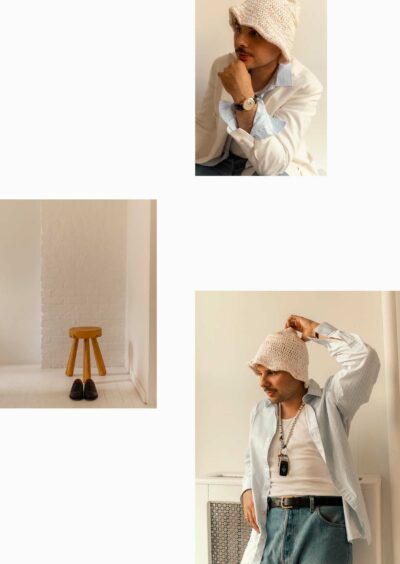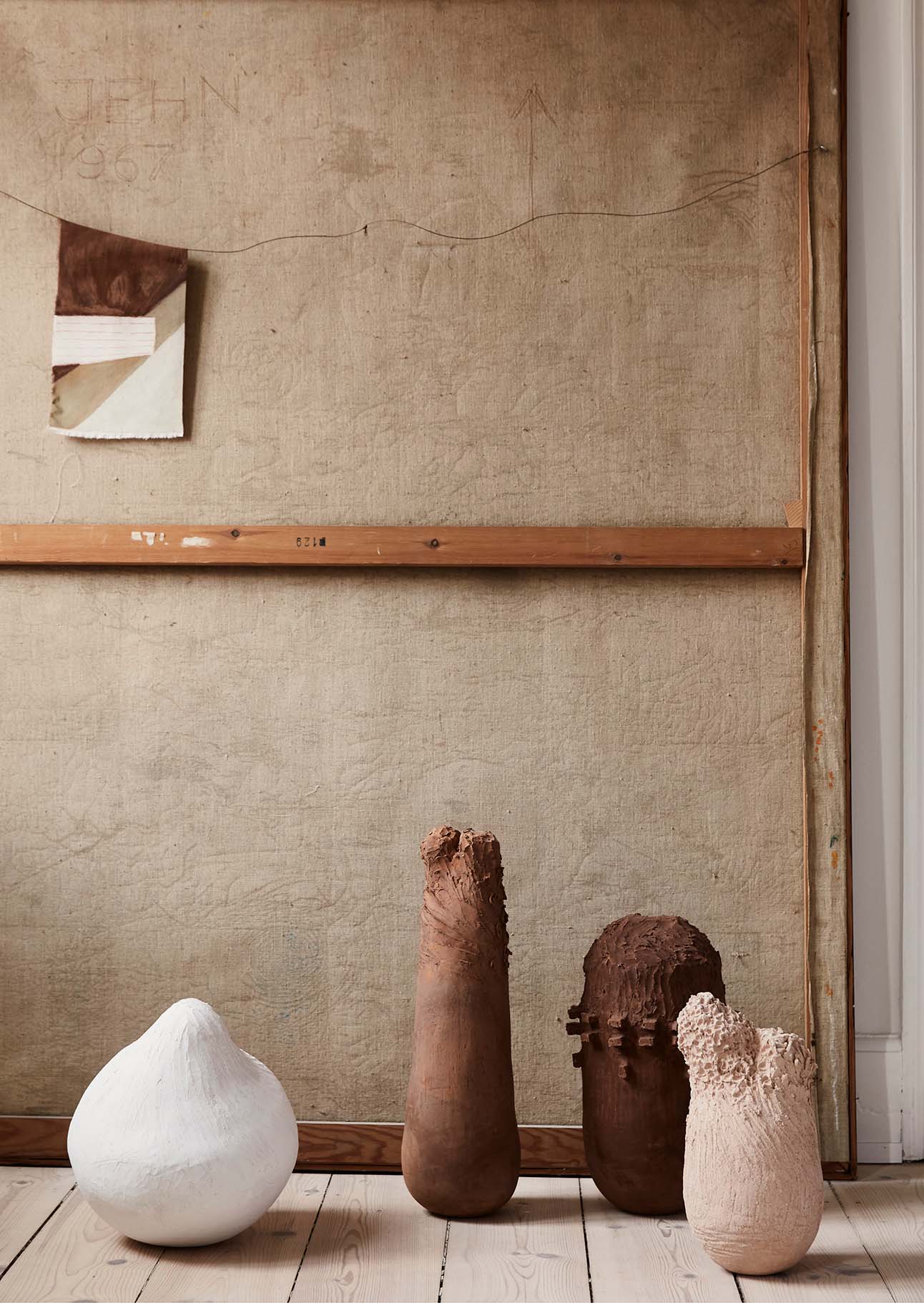
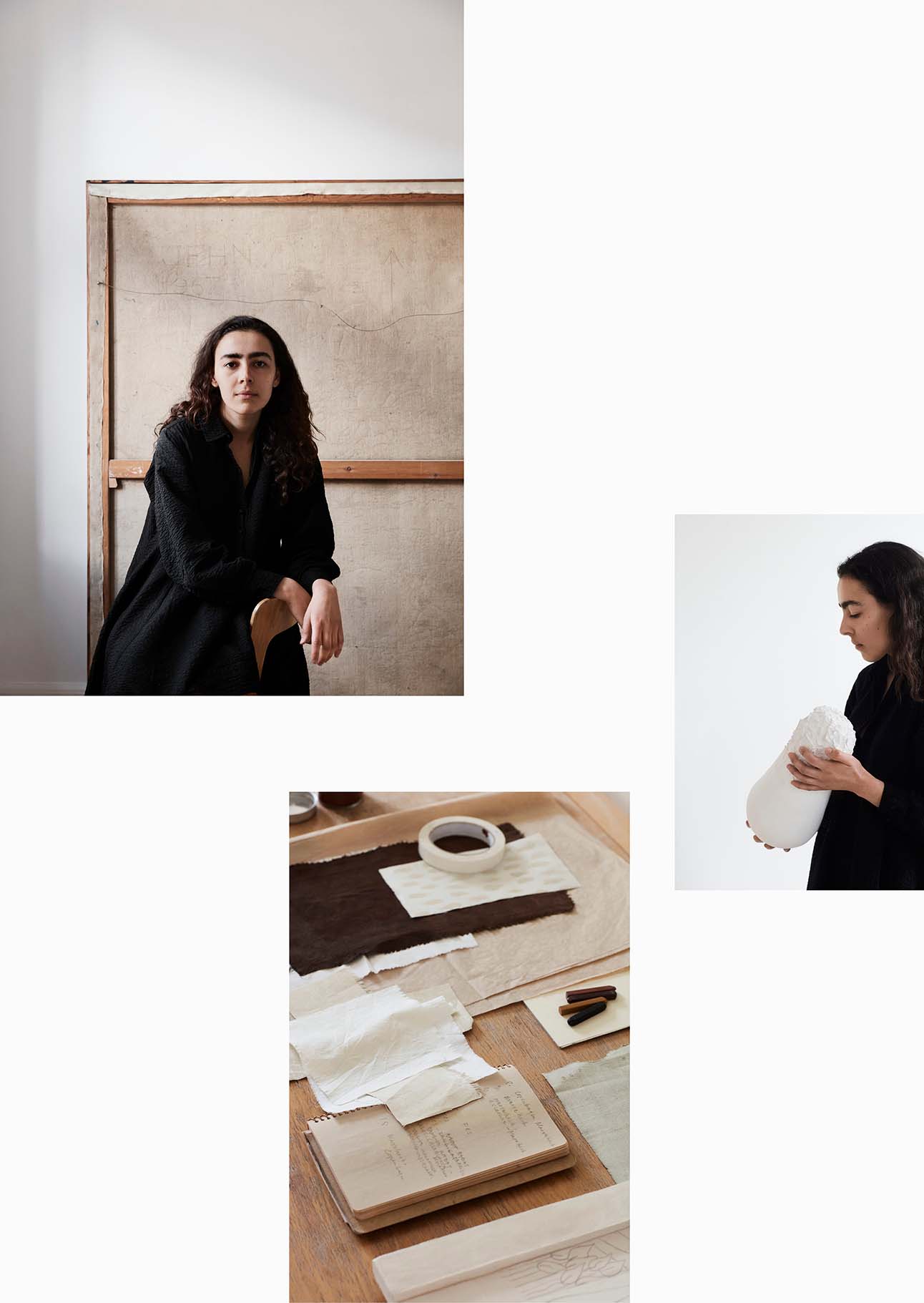
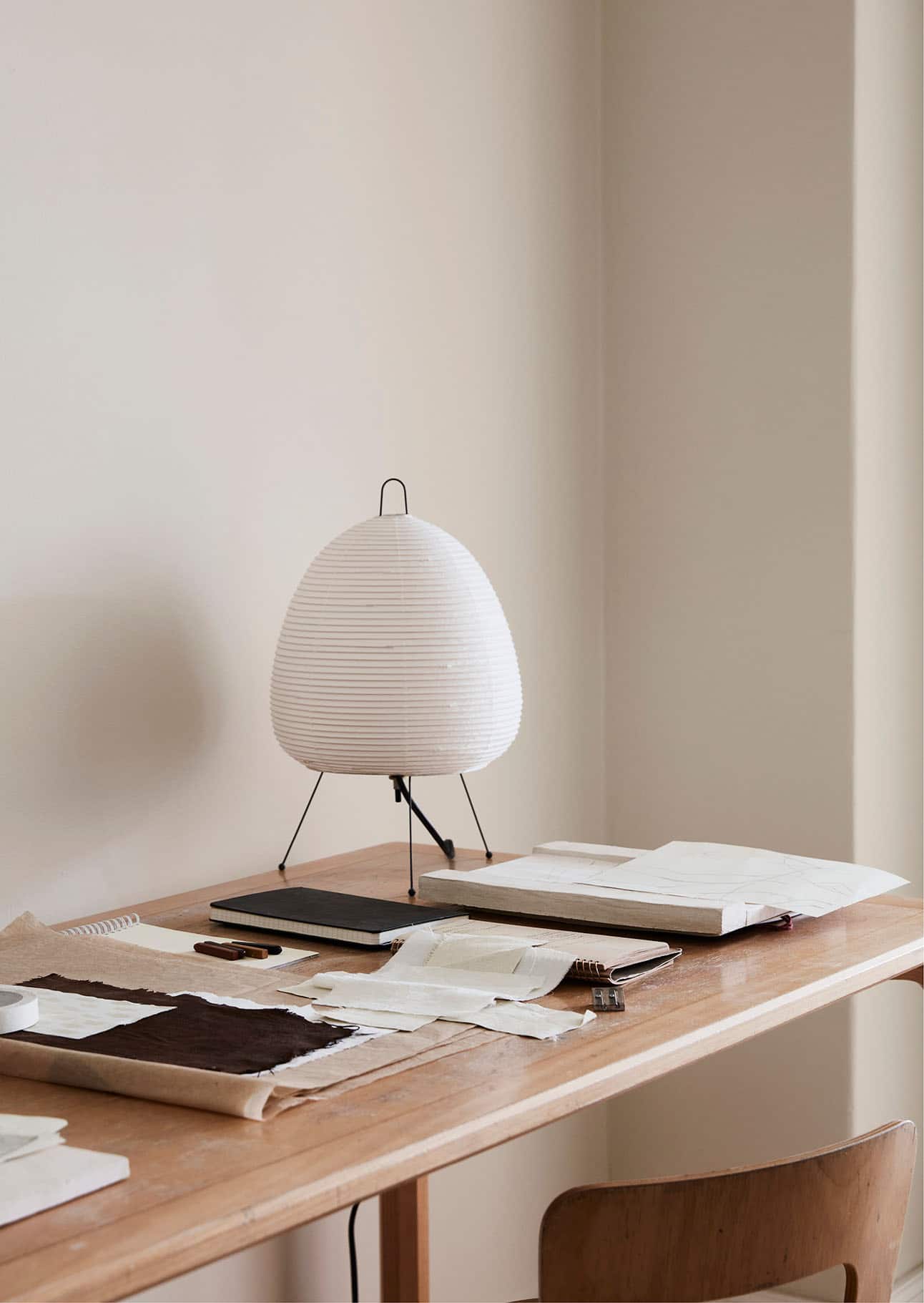
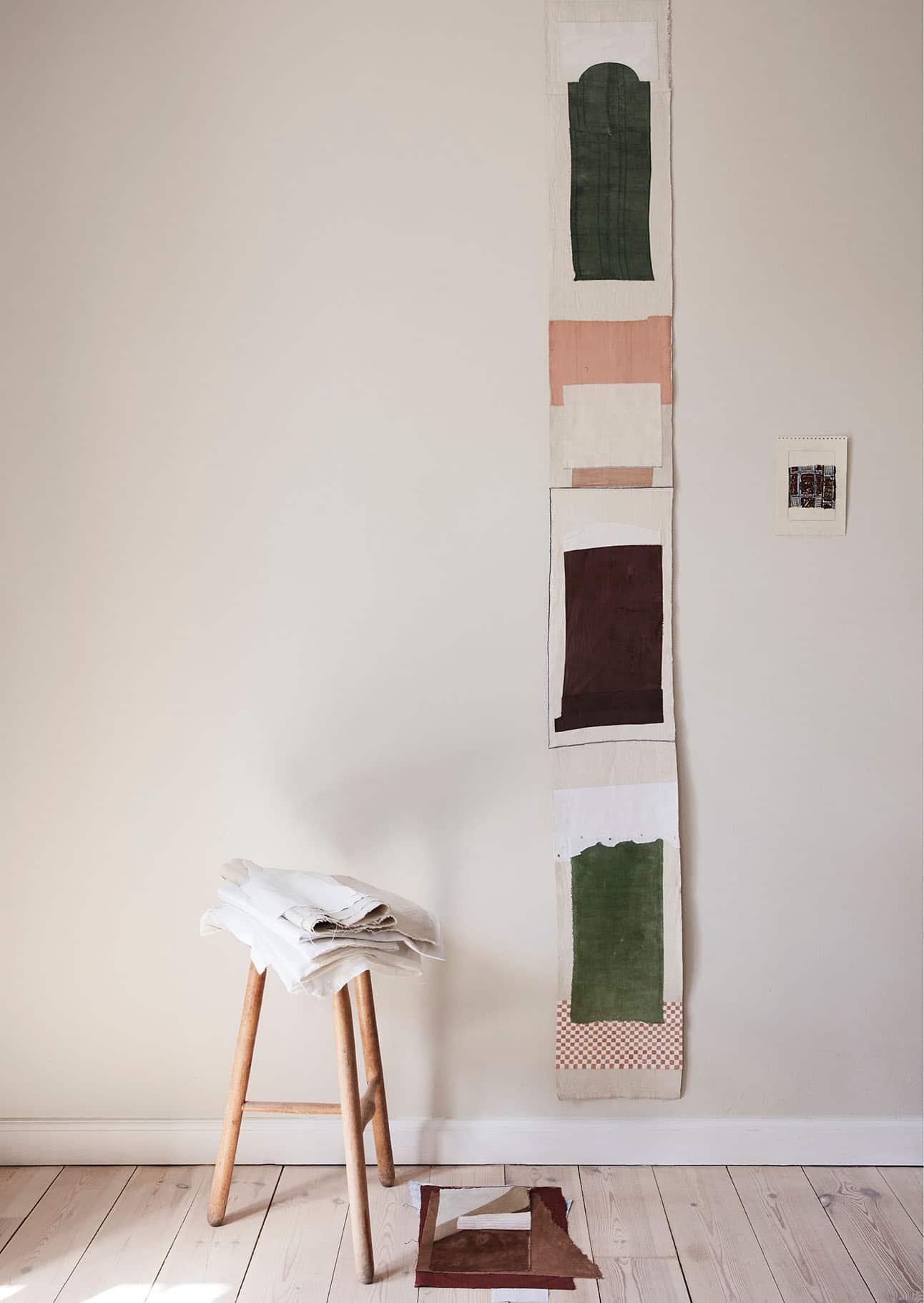
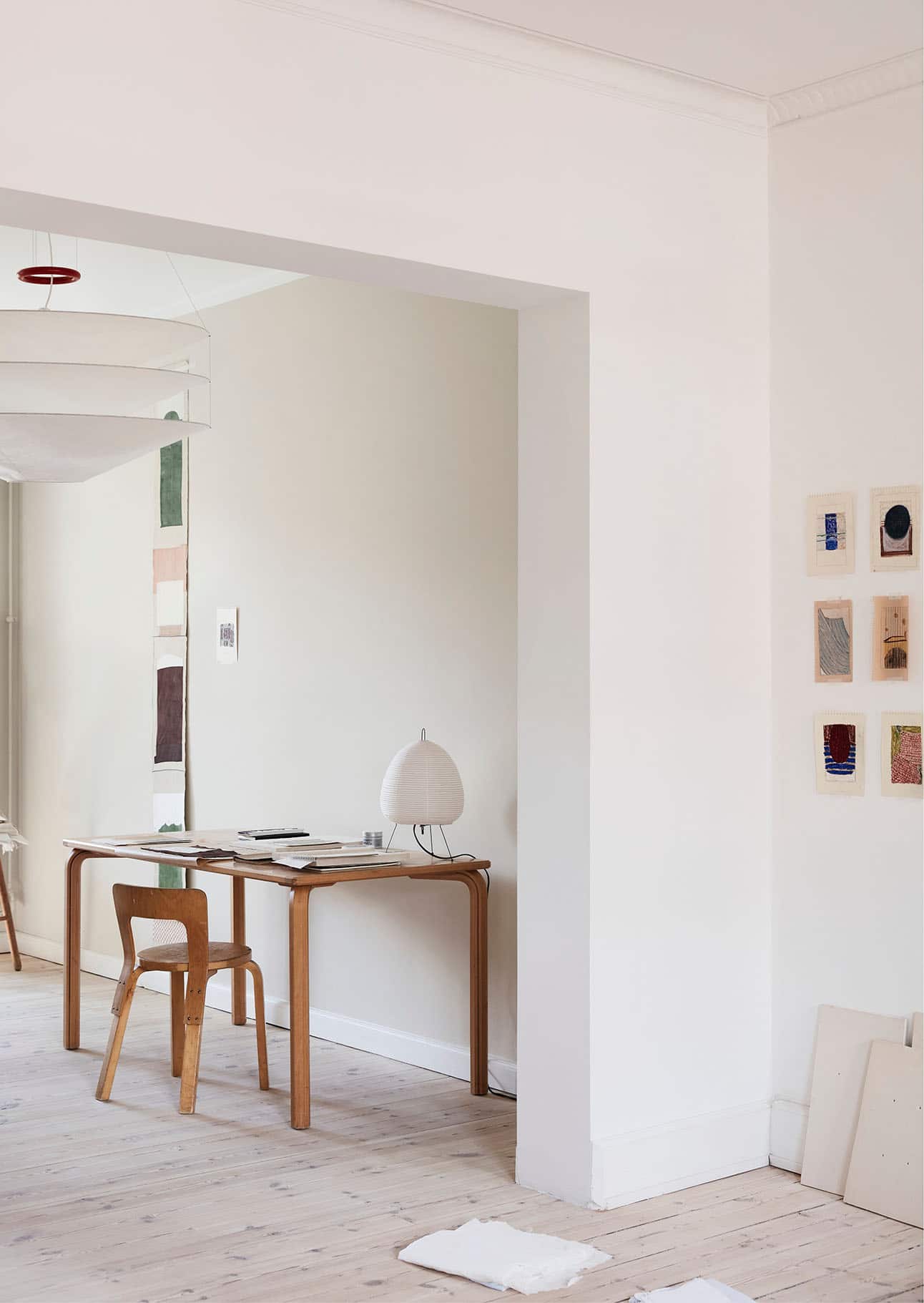
CREATIVE VOICES
— Patricia Perales García
Design
Fragments of memory and changing seasons are evoked in the ceramics and textile assemblages of Patricia Perales García as costume design crosses over with sculpture.
In a lull from her usual work as a clothing designer in London, Patricia Perales García, a native of Burgos, Spain, found clay. “I was searching for a way to evolve my practice and started making my own pigments and colours. I think that colour, tone and texture are what drives my work and my eye. I began by mixing chalk with pigment, painting my clay sculptures,” she says. She saw a new vein forming within her practice, treating her hand-coiled terracotta pots with the mind of an artist educated as a costume designer in Florence. Often, Perales García works with fragments – of memory and experience, tone and technique, material and form. Her pots and sculptures are sometimes subdued, mimicking the earthy hues of her home region, other times painted with an underglaze in a surreal yet intimate manner. They narrate stories from an upbringing and dreamlike snatches of memories; a ladder not to walk under, domestic scenes or textural surfaces reminiscent of fabric piled, all in a way reminiscent of the matte murals of ancient Pompeii. Relocating to Copenhagen shortly before lockdown last year, she set up her studio at home. Perhaps to grasp something tangible from the before, she rummaged through her own collection of textiles: antique kitchen towels, plant-dyed cloth, remnants of old clothing salvaged or exceptional handcraft found while traveling. She returned to the fragment as a theme, layering and hand-stitching pieces of these together in narrow strips, evocative of scrolls of parchment. “As I was walking back and forth in my apartment, each day the same, there was something beautiful in seeing these works in flux, changing as the days passed and the seasons changed,” she recalled. Painting some with rich natural pigment and powdery casein, she constructs several of these works simultaneously, striving to somehow record the passing of time. In a more abstract fashion, they chronicle particular shades of colour, impulsively imagined patterns, remembrance of textures and tactility. It is somehow befitting that these are hung from an ingenious ceramic construction of her own making, emblematic of a ceramic practice effortlessly interlaced with her textile work.
This story appears in Ark Journal VOL VI
STYLING PERNILLE VEST
PHOTOGRAPHY ANDERS SCHØNNEMANN
WORDS ALISA LARSEN
TAILORED INTERIOR
In the small Belgian village of Itegem, interior architect Peter Ivens discovered a unique and exotic villa with well-preserved 1920’s details reminiscent of a classical British colonial style – a central stairway, symmetrical plan, alcove windows, hipped roof and upper dormer windows.
CASE STUDY
— MONUMENTAL MONOCHROME
The enduring aesthetic of Danish furniture has always been entirely in step with other contemporary design practices, ceramics, glass, textiles, and particularly architecture.
LANDON METZ
Space is important to Landon Metz. In his art, pools of colour float across canvas leaving vast areas of unprimed fabric. In his studio the same sense of space – and the importance of the negative – is evident in the blanks between sparsely scattered furniture and plants.

CREATIVE VOICES
— PATRICIA PERALES GARCÍA
DESIGN
Fragments of memory and changing seasons are evoked in the ceramics and textile assemblages of Patricia Perales García as costume design crosses over with sculpture.
In a lull from her usual work as a clothing designer in London, Patricia Perales García, a native of Burgos, Spain, found clay. “I was searching for a way to evolve my practice and started making my own pigments and colours. I think that colour, tone and texture are what drives my work and my eye. I began by mixing chalk with pigment, painting my clay sculptures,” she says. She saw a new vein forming within her practice, treating her hand-coiled terracotta pots with the mind of an artist educated as a costume designer in Florence. Often, Perales García works with fragments – of memory and experience, tone and technique, material and form. Her pots and sculptures are sometimes subdued, mimicking the earthy hues of her home region, other times painted with an underglaze in a surreal yet intimate manner. They narrate stories from an upbringing and dreamlike snatches of memories; a ladder not to walk under, domestic scenes or textural surfaces reminiscent of fabric piled, all in a way reminiscent of the matte murals of ancient Pompeii. Relocating to Copenhagen shortly before lockdown last year, she set up her studio at home. Perhaps to grasp something tangible from the before, she rummaged through her own collection of textiles: antique kitchen towels, plant-dyed cloth, remnants of old clothing salvaged or exceptional handcraft found while traveling. She returned to the fragment as a theme, layering and hand-stitching pieces of these together in narrow strips, evocative of scrolls of parchment. “As I was walking back and forth in my apartment, each day the same, there was something beautiful in seeing these works in flux, changing as the days passed and the seasons changed,” she recalled. Painting some with rich natural pigment and powdery casein, she constructs several of these works simultaneously, striving to somehow record the passing of time. In a more abstract fashion, they chronicle particular shades of colour, impulsively imagined patterns, remembrance of textures and tactility. It is somehow befitting that these are hung from an ingenious ceramic construction of her own making, emblematic of a ceramic practice effortlessly interlaced with her textile work.
This story appears in Ark Journal VOL VI
STYLING PERNILLE VEST
PHOTOGRAPHY ANDERS SCHØNNEMANN
WORDS ALISA LARSEN




